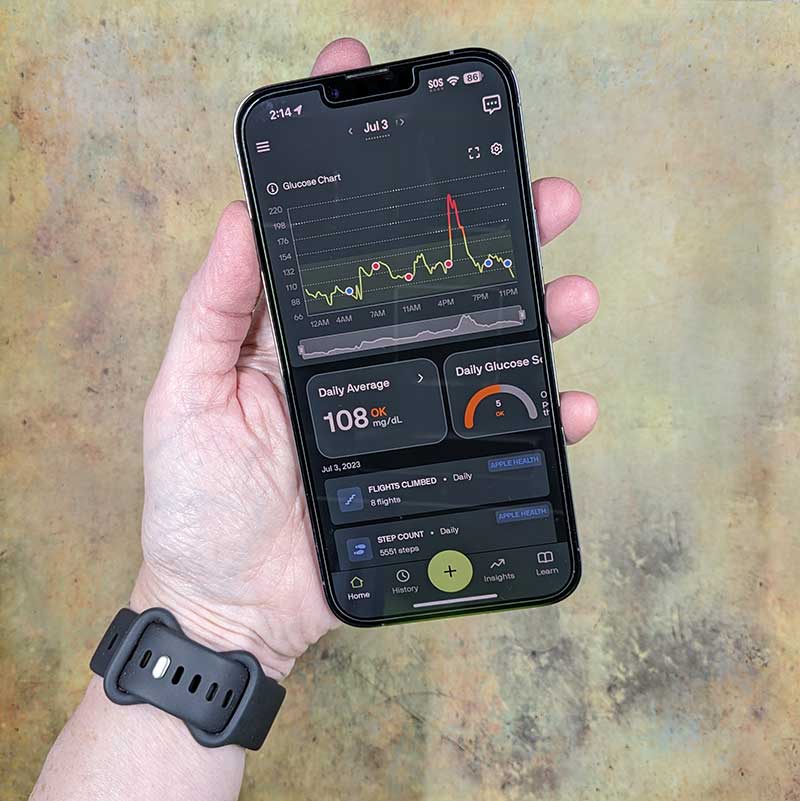
REVIEW – Frequently indulging in a diet full of candy bars, chips, pizza, cake, cookies, etc. will obviously impact your waistline, but have you ever wondered how foods impact other areas of your health, like your blood sugar? I’m sure you’ve heard of diabetes, and how it can wreak havoc on your organs. For many people, they can go for years and even decades without knowing that they have a problem with their blood sugar. How can you find out how your blood sugar reacts to the foods that you eat? One way is with the Nutrisense real-time glucose analysis system. You don’t even need a doctor’s visit to check out this system. Let’s check it out.
What is it?
Nutrisense is a system/program that uses a CGM (continuous glucose meter) and a mobile app that helps you track how your blood sugar reacts to the foods that you eat as well as sleep and stress. Nutrisense is also a human dietitian/coach who will help you understand your readings and motivate you to improve them if you need help.
What’s in the box?
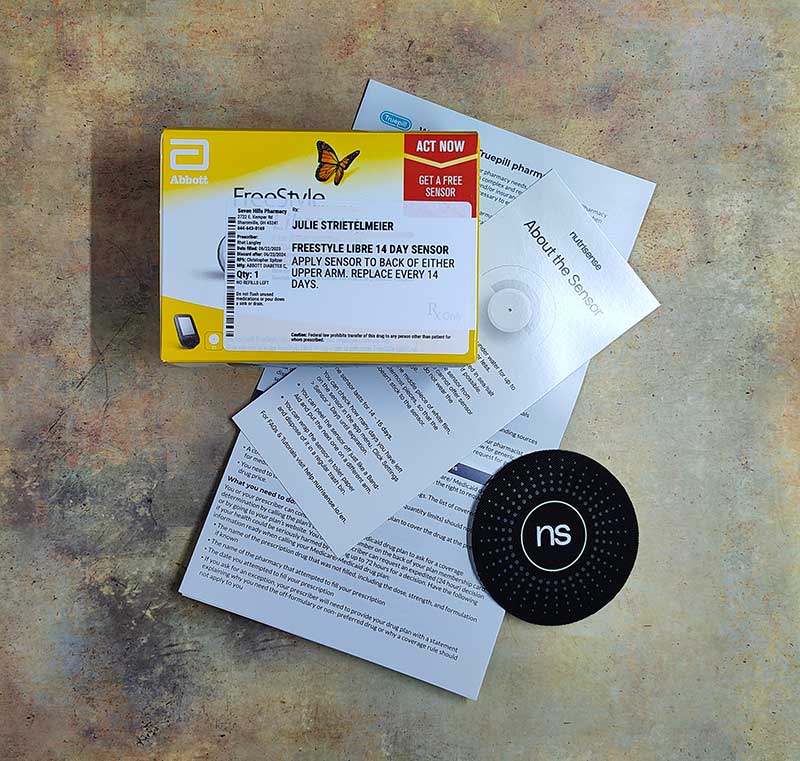
- FreeStyle Libre 2 CGM
- Protective adhesive patch
- Info sheets
A little background about me and diabetes
I’m not going into this review without any knowledge of diabetes. I know how brutal the disease is because I grew up with a mother who was a “brittle” diabetic with wild swings in blood sugar levels. My mom died way too young at age 58 after multiple amputations and strokes. When I found out that I was a diabetic in 2004, I immediately changed my eating and exercise habits to combat it.

At a routine yearly physical, my fasting blood sugar was 101, which is 1 point over what is considered the high end of a normal fasting glucose reading. So I had an A1C test and the result was 6.7 which meant that I was a diabetic. I didn’t want to take insulin so I opted to try diet and exercise first as a means to lower my A1C level. I successfully brought it down to 6.0 in just 6 months and in the years that have followed, I’ve stayed around 5.7 which has kept me in the pre-diabetes range.
Signing up with Nutrisense
When you first sign up for Nutrisense, you have to fill out a questionnaire that asks some basic health questions and questions about your goals for using the system, whether it is for weight loss, help with eating better, creating better habits, etc.
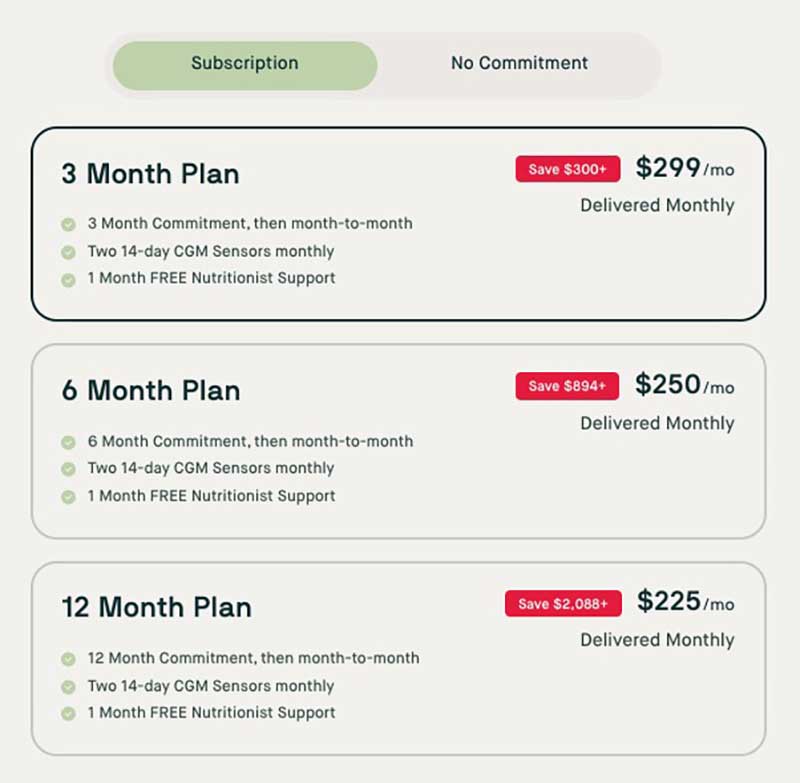
You’re then presented with the Nutrisense plan’s pricing info. If you’re looking at those monthly prices, you might have a little sticker shock, but note that you are receiving two CGMs a month and one month of free nutrition support/coaching from a real person. If you opt to continue receiving coaching support, the price is $100 per month after the first free month. What exactly does the coach do? Here’s info from the Nutrisense FAQ:
Glucose and health data can be confusing, but your nutritionist can help make sense of it all. They will work with you one-on-one through the in-app messaging feature in the Nutrisense app, to help you achieve your wellness goals. By analyzing your data, they will suggest lifestyle changes that are personalized to your body. With your nutritionist’s help, you can create weekly, manageable habits and track them to meet your health goals. They act as your coach and keep you motivated and accountable.
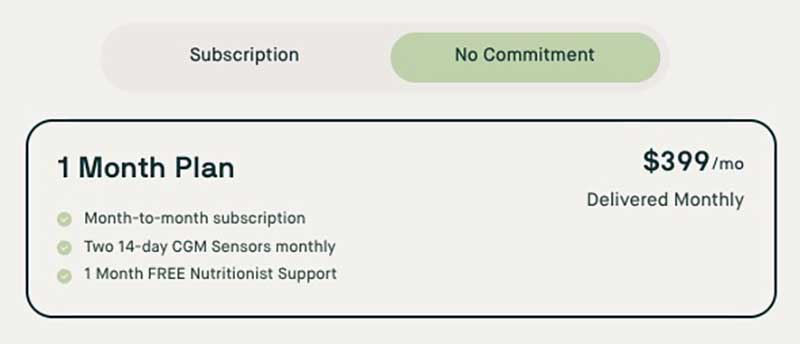
If you aren’t interested in a subscription and just want to try the Nutrisense plan for one month, you can go with the no-commitment route which is obviously more expensive, but you’re not locked into paying for multiple months.
Some other important info to consider is that Nutrisense isn’t covered by your health insurance. It’s possible that you can use your HSA or FSA, but you’ll need to check with your fund to make sure.
It’s also good to know that you don’t need a doctor’s appointment or a prescription in order to use/try this program.
You can purchase the plan directly through Nutrisense and can save $25 when you use the code: GADGETEER25.
Getting started with the Nutrisense program
After you sign up for a plan, you’ll receive a package in the mail with your first CGM.
Nutrisense uses FreeStyle Libre 14 day CGMs (continuous glucose sensors). If you’re not familiar with CGMs or the FreeStyle Libre, check out my detailed FreeStyle Libre CGM review. The TL:DR version is that the CGM that is included in this program is a wearable sensor that tracks your blood sugar (glucose) readings when you scan it with your phone.
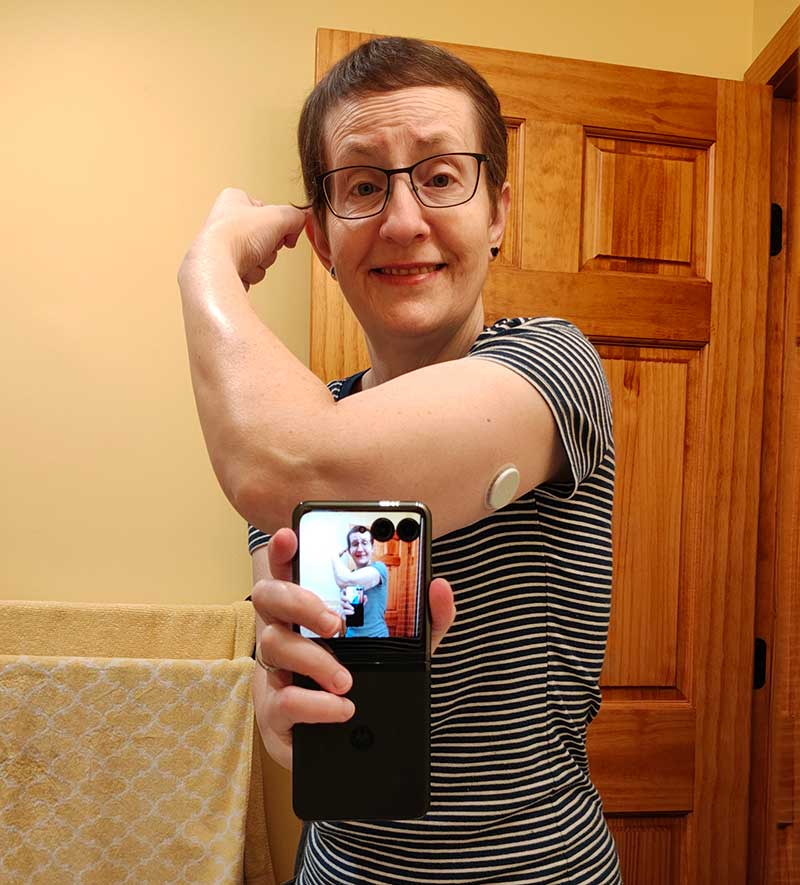
The sensor goes on the back of your arm and although it may look a little scary if you click on that gallery of images above that shows a needle, it is painless to put on and I’ve been using them on and off for several years now and have never had a problem other than a slight irritation from the adhesive on the back of the sensor that is used to stick it to your skin. I’ve learned tricks to minimize this irritation so it’s really become a non-issue.
Using the Nutrisense app to learn how your eating and other habits affect your blood sugar levels
The whole point of the Nutrisense program is to help you learn how the foods that you eat, your sleep, stress, and exercise can help and hurt your overall health by the way that they impact your glucose levels. High glucose (blood sugar) levels lead to diabetes which is a silent killer that can harm your organs, cause strokes, lead to dementia, and amputations if not controlled.
To use the Nutrisense program, you put on the CGM, install the app, and start using it to view glucose level data collected before and after meals, exercise, etc.
With the app, you can scan the CGM sensor to check your glucose level whenever you like and it will not only show the current reading but will also record all the readings 8 hours previous. The CGM only has an 8-hour memory, so you have to scan it at least once every 8 hours so that you don’t miss any readings.
You also use the Nutrisense app to record your meals. The app will let you take a picture of your food and you can either type in what you ate and have AI provide the details (calories, carbs, fat, protein) or if the food was packaged, you can scan the barcode to pull in those details. After you’ve eaten, the app will assign a score to the food based on how much of a glucose spike it created. In this way, you can build a knowledge base of what foods you should eat and which ones you should steer clear of.
The Nutrisense app has some great info about each meal including how much of a spike occurred, and how long it took to recover from that spike. All of this info goes into the score and helps you learn more about how your body behaves.
I personally eat a lot of Keto friendly foods which basically means low-carb foods. I have found that some of these so-called Keto friendly foods aren’t that friendly to my body and even if they say they are low carb, some of them still spike my glucose. That’s the beauty of using a CGM and apps like Nutrisense because they make it a lot easier to understand individual food impact vs. a traditional blood glucose meter that will only show you the blood sugar reading at the exact time that you do the finger stick instead of a whole range of readings. Sure, you could do that with a traditional meter, but you’d be poking your finger every 10 minutes and no one wants to do that!
The Nutrisense app also gives you an idea of how well you are staying in the ideal range on a given day, week, and longer. You can also drill down into individual glucose readings.
Coaching
The nice thing about the Nutrisense program is the live coaching. When you sign up with the program, you’ll be assigned a coach based on the type of coaching that you prefer. The coach will contact you through the app or via email so that you can easily correspond back and forth. The coach will look at your data and give you insight into what’s going on, how to improve, and other suggestions. They will also answer your questions. I found the coaching part of the program to be invaluable.
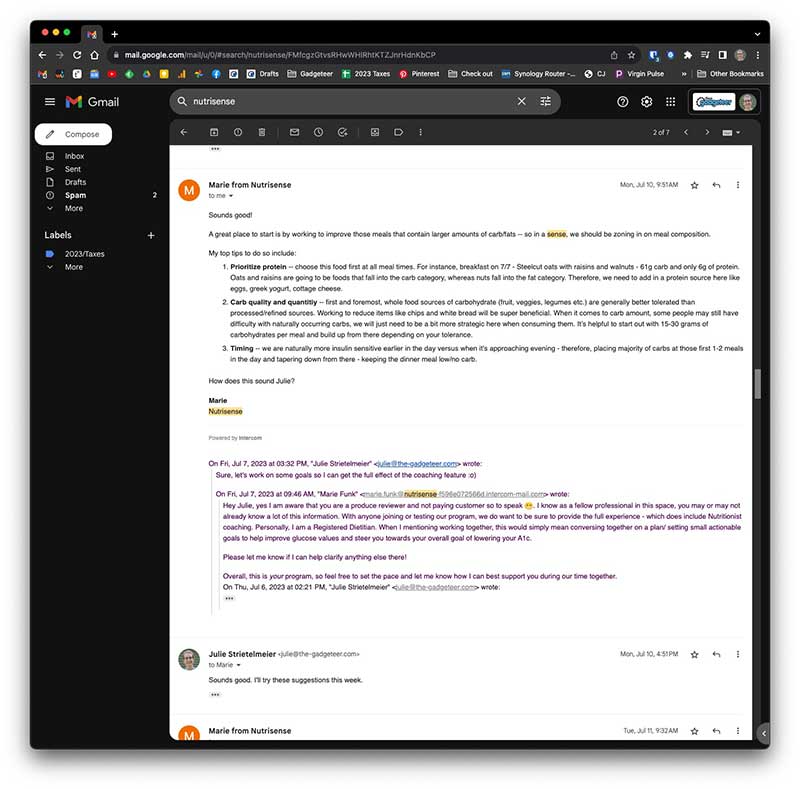
I learned a lot from my coach Marie, a registered dietitian. Among other things, she taught me that I should avoid eating too many carbs for my evening meal because insulin sensitivity later in the day is not as good as it is in the morning/earlier hours of the day. This info helped me with my glucose readings before going to bed and the next morning. She also answered all my questions about my readings, gave me meal ideas, and was encouraging without being like a drill sergeant.
What I like
- Does not require a doctor’s appointment or prescription to do the program
- Includes 1 month of coaching with a real person
- Subscription or no commitment plans
What I’d change
- Don’t charge extra for coaching if you’re an ongoing subscriber
Final thoughts
I realize that the Nutrisense glucose tracking system isn’t for everyone due to the price, but even trying it for one month can give you a lot of good information about your body and the current state of your metabolic health. Optimizing your metabolic health can keep your weight under control and can also help prevent type 2 diabetes, both of which will help you live longer and healthier.
Price: Varies with the subscription plan. The lowest price is $225 a month if you sign up for 12 months.
Where to buy: Nutrisense ( Save $25 when you use the code: GADGETEER25 )
Source: The sample for this review was provided by Nutrisense.

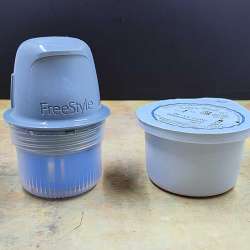
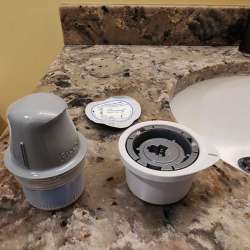
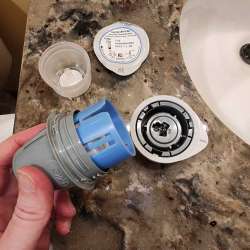
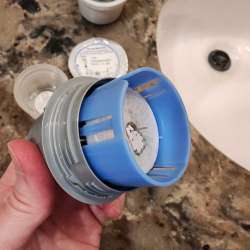
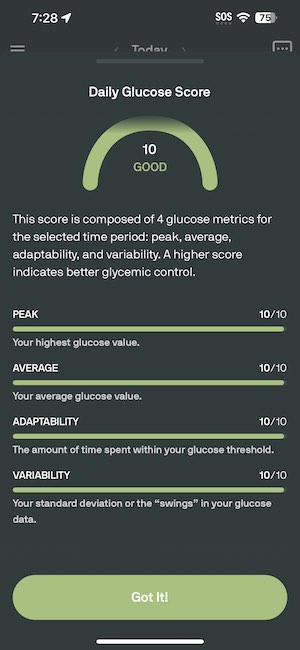
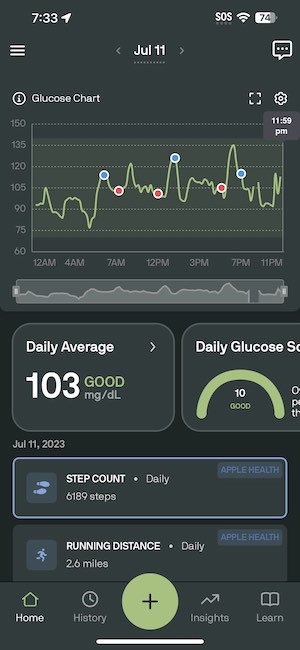
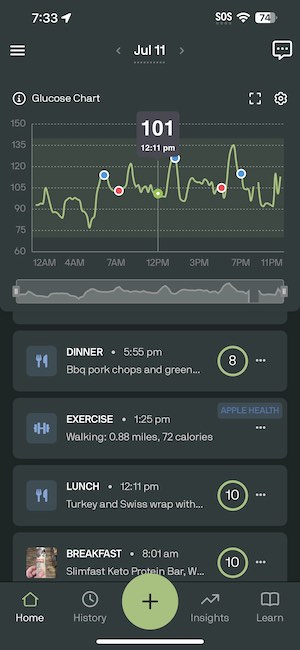
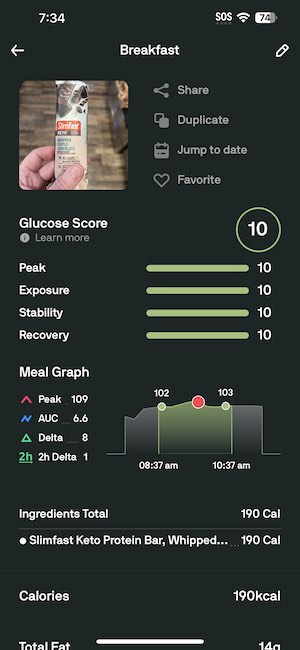
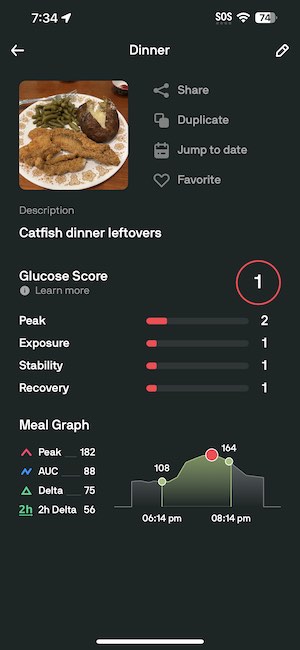

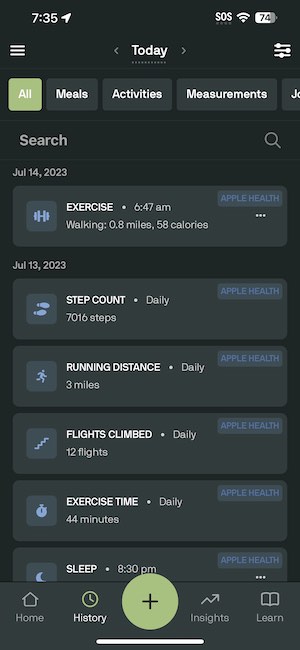
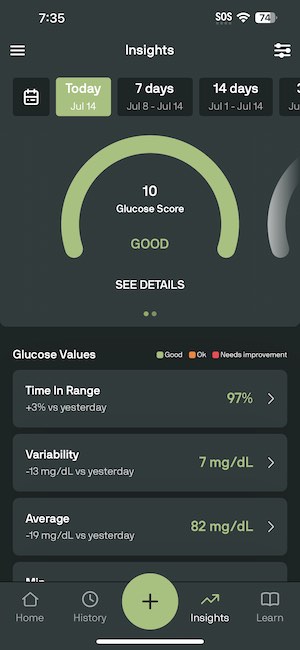
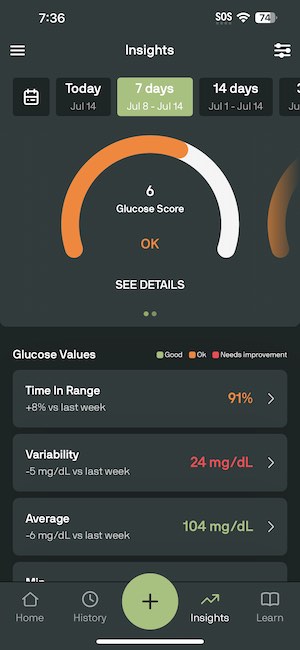
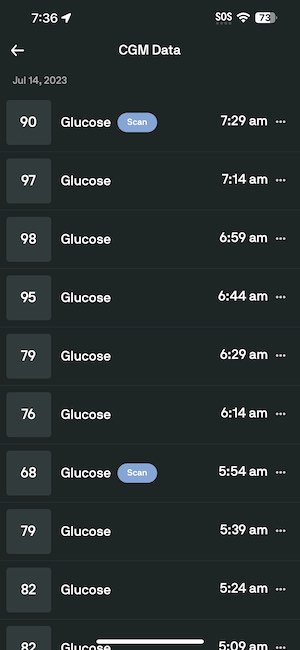


Gadgeteer Comment Policy - Please read before commenting
Hi Julie,
I am a type 2 Insulin dependent diabetic with my mothers history very similar to yours with multiple amputations and an early death brought on by her diabetes. In my case my fasting glucose was almost 400 when diagnosed. I currently use the Dexcom G7 CGM to track my glucose and it has really given me insight to how different foods affect my glucose. I like that this plan has a dietitian to evaluate your meals and eating habits. I do encourage people to check with their insurance as things are rapidly changing in the type 2 sphere as far as coverage for CGMs. The other thing I would like to caution people is not to become what I call “numbers obsessed” which can lead to just as unhealthy diets as eating junk food.
I am currently on the FreeStyle Libre 3 which is like the Dexcom in that you no longer have to manually scan the sensor to “download” the data to the app every 8 hrs. I really like the 3 due to the new smaller size and no scanning. I don’t know how long I’ll be able to keep using the sensors since I’m not insulin dependent and am in the pre-diabetes range with an A1C of 5.8 as of a month ago.
You should keep make sure to keep checking insurance and medicare. As you are a cancer survivor you may fall into “special case” qualifications.
The continuous readings are great since you can see trends ahead of time. Even if you loose use of a sensor it is great that you are keeping your readings under control with diet and exercise!
I’m too young for medicare 😉 But yes, I will keep using the sensors as long as I can. I know that when I wasn’t using one after retiring from my day job last year, that I got a little off the rails with my eating. Now that I’m back to using one, there’s no “out of sight, out of mind” factor.